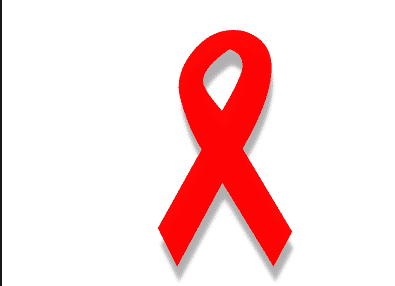HIV AIDS Bill
Contents
The amendments to the HIV and AIDS (Prevention & Control) Bill, 2014 which makes discrimination against a person living with HIV/AIDS a punishable offence, has been cleared by the Union Cabinet thereby granting stronger protection to the HIV community of India.
Provisions of the Bill
- The Bill was introduced in the Rajya Sabha in 2014 and was then referred to the Parliamentary Standing Committee on Health and Family Welfare.
- After the Standing Committee submitted its report, a Group of Ministers headed by Finance Minister Arun Jaitley finalised the draft that was forwarded to the Cabinet.
- The Bill seeks to give a legislative framework to existing norms of non-discrimination against people living with HIV/AIDS. It makes denying health insurance to an infected person a legally punishable offence.
- The protection from discrimination, apart from insurance, extends to the fields of employment, healthcare services, public facilities, property rights, holding public office etc. The Bill provides for a jail term for those who are proved to be involved in discrimination.
- Requirements for HIV testing as a pre-requisite for obtaining employment or accessing healthcare or education is also prohibited.
- It also recognizes the right of a person living with HIV/AIDS to keep his/her health status confidential. Institutions keeping records of information of PLHIV are obliged to keep all such information confidential and reveal them only with the informed consent of the person.
- It will establish a formal mechanism to probe discrimination complaints.
- Every HIV infected person below the age of 18 years will have the right to reside in a shared household.
- The states are expected to provide ART and infection management, facilitate access to welfare schemes and formulate HIV education programmes that are gender-sensitive, age-appropriate and non-stigmatising.
- Cases relating to HIV positive persons shall be disposed off by the court on a priority basis. In any legal proceeding, if an HIV infected or affected person is a party, the court may pass orders that the proceeding be conducted :
- by suppressing the identity of the person
- in camera
- to restrain any person from publishing information that discloses the identity of the applicant.
People Living with HIV/AIDS in India
- As per government estimates, there are approximately 21 lakh people living with HIV/AIDS in India.
- The adult prevalence is in the range of 0.3% of which around 40% are women.
- The percentage of patients receiving Anti Retroviral Therapy (ART) treatment currently stands at a mere 25.82% as against the global percentage of 41%, according to the 2015 Global Burden of Diseases (GBD).
- Some states have more people living with HIV/AIDS than others. Andhra Pradesh, Maharashtra, Karnataka and Tamil Nadu account for about 55% of the total cases in the country.
How will the proposed law help in the treatment of AIDS?
- The Bill seeks to bring a rights-based approach to AIDS treatment, making it imperative for both central and state governments to provide treatment “as far as possible”.
- The Central and State governments are also obliged to manage opportunistic infections (infections that take advantage of weakness in the immune system and occur frequently).
- But though the Bill lays down that treatment is the right of the patient, it stops short of making it a legal right. This means that a patient who is denied treatment cannot drag the government to court.
What is ART and CD4 count?
- ART or the Anti Retro Viral Therapy consists of a combination of Anti Retro Viral (ARV) drugs to maximally suppress the HIV virus, and stop progression of the disease.
- Last year, the Health Ministry had finalized revised norms for ART that made all patients with a CD4 count of 500 eligible for ART against the earlier norm of 350.
- This brought an estimated 1 lakh additional People Living with HIV (PLHIV) under the ART umbrella, taking the number of Indians currently under the regime to approximately 12 lakh.
- The CD4 count measures the number of CD4 T lymphocytes in blood, and it is the most important laboratory indicator of how well the immune system is working in people with HIV.
- Employing the ART regime at a higher CD4 count means starting the therapy earlier, which reduces mortality (deaths) and morbidity (disease) and the incidence of opportunistic infections like Tuberculosis.
What happens to the insurer that denies insurance to a PLHIV?
- The HIV AIDS Bill provides for the appointment of an ombudsman by each state government who will be given the task of inquiring into violations of the Act and will be entitled to take action.
- The company would have to pay a fine of Rs. 10,000 upfront and a further Rs. 5,000 per day until it agrees to give cover.
- The Standing Committee had said that, ” all HIV positive people should be provided insurance cover without any discrimination preferably at normal rate of premium or they may be charged slightly higher rate, but in no case exorbitant rate should be charged for providing insurance cover for both life and health insurance”.
What is the “guardianship clause” in the HIV AIDS Bill?
- Recognizing that HIV/AIDS often causes children to be orphaned, and extended families are reluctant to shoulder their responsibility, the Bill says that any person aged between 12 and 18 years with “sufficient maturity in understanding and managing the affairs of his HIV or AIDS affected family” can act as a guardian of another sibling below 18 years of age to be applicable in the matters relating to admission to educational establishments, operating bank accounts, managing property, care and treatment etc.
A step in the right direction?
- The Bill comes at a time when the national HIV programme has weakened due to Budget slashes and patients are facing drug shortages across the country.
- There is a need to address the inadequate funding, the procurement system that is resulting in drug shortages and the lack of clarity in the HIV policy.
- The HIV AIDS Bill will go a long way in empowering the civil society to hold those stigmatizing the HIV community in contempt.
What remains to be done?
- There is a lack of clarity about whether the new Bill contains provisions for free or complete treatment of the patients, a long-standing concern of the HIV community.
- There is very little focus on women’s needs within HIV programmes.
- A UNICEF report states that only 23 percent of pregnant women living with HIV undertook ART in 2009 because of factors like social customs and family restrictions.
- There is a lacuna in the definition of a ‘protected person’ in the Bill. It still refers to an individual who is either living with HIV or residing with an HIV-affected person in the present or the past, and these are the people who are entitled to anti-discrimination, informed consent and other rights.
- The HIV AIDS Bill must include provisions for the protection of people who are most vulnerable to contracting the disease as well, such as people frequently using contaminated injection equipment. Vulnerable people, also known as the most-at-risk population (MARP) would also include transgender women, men who have sex with men and women who sell sex.
- There is a need to reword the treatment clause to make it compulsory.
- For medical care to be delivered in time, the public healthcare system needs to function properly.
- There is also dissatisfaction with the change of the minimum age of a person who can get tested for HIV to 18 years, which many want to be fixed at 14 years.
- The insurance industry is allowed to use actuarial calculations to limit access to products to people with HIV.
- The HIV AIDS Bill is a step forward, but the problem unfortunately, lies in people’s attitude. To bring about a change in attitude will take a longer time.









